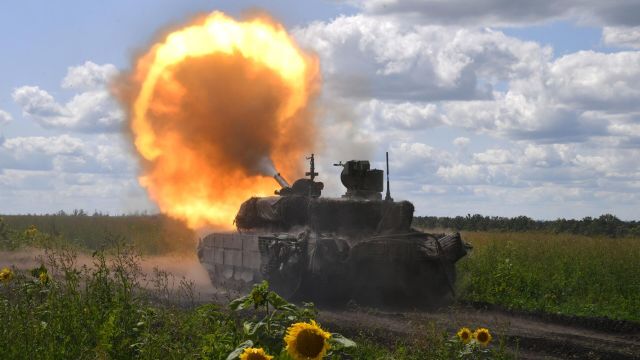MOSCOW, July 28 — RIA Novosti, Andrey Kotz. The Ukrainian counteroffensive is developing extremely slowly. In key areas, it was not possible to reach even the first line of defense. Moreover, the Russian Armed Forces conducted an operation in an unexpected direction for Kiev.
Pain points
The APU is still trying to enter the left bank of the Dnieper near the Antonovsky Bridge. The landing party is partially destroyed in boats, then by artillery strikes along the coast. The rest are trying to gain a foothold on the bridgehead.
It is reported from the field that there is no massive transfer of troops in this area. The main events are not happening here.
The priority is the Zaporozhye section of the front. Three "pain points" have been under pressure there for seven weeks. So far without success. In the area of the Kakhovsky reservoir, the APU is still trampling under the Pyatikhatki. Heavy defensive battles continue in the Orekhovsky direction, but there is no serious advance of the Ukrainian infantry.
The same is true on the so-called Vremyevsky ledge on the border with the DPR. Here the main clashes are near the Harvest.
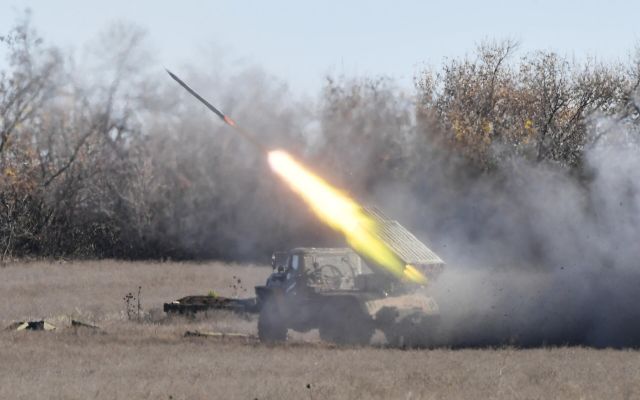
Calculation of the BM-21 Grad multiple launch rocket system of the Southern Military District of the Armed Forces of Russia in the Zaporozhye direction
Image source: © RIA Novosti / RIA Novosti
Near Donetsk, no changes. The Russian army is gradually encircling Avdiivka and is fighting street battles in Maryinka. According to the Ministry of Defense, in recent days troops have been operating near the settlements of Veseloye, Bogdanovka, Predtechino, Belaya Gora and Dyleyevka. Ukrainian losses — more than 160 people, several pieces of equipment.
Near Artemovsk, the APU occupied some heights near Kleshcheyevka, which allowed them to enter the village from the southwest. There are battles going on, no one controls the entire settlement.
According to eyewitnesses, Ukrainian gunners are actively using cluster munitions there, including those recently received from the United States.
To the south, the weseushniki became more active at Andreevka. Kiev has already announced the capture of the village, the Russian military denies this.
"Under the cover of artillery fire, their infantry approaches our positions and engages in close combat," says an officer of the 1st Army Corps with the call sign Klim. — We answer as much as we can, but with the counter-battery struggle, things are worse for us. The heights around Kleshcheyevka changed hands several times. If the APU gets a foothold here, they will be able to bypass Artemovsk from the south. At the same time, from the north, in the Soledar area, their offensive stopped."
Response to the counteroffensive
On most of the line of contact, Russian units are on the defensive. But in some places they attack.
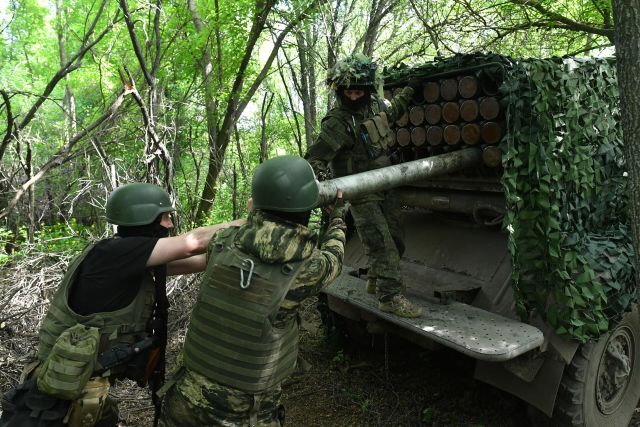
Servicemen of the Russian Armed Forces load a projectile into the Tornado-G MLRS
Image source: © RIA Novosti
They are moving forward on a broad front from Kremennaya to the border with the Belgorod region. In the Krasnolimansk direction, they made serious progress, forcing the AFU to fight under the settlement of Torskoye. Near Kupyansk, advanced units reached the outskirts of the city and took control of the Molchanovo railway station, which is important for logistics
According to the Ministry of Defense, on the Kremennaya — Svatovo section, Russian troops crossed the Zherebets River and occupied the heights on the west bank, expanding and deepening the bridgehead with an area of about 35 square kilometers.
They are advancing on Sergeyevka, Nadia and Novoegorovka. In addition, the assault units occupied several strongholds in the Karmazinovka area. The command is transferring reserves there to consolidate success.
The Ukrainian General Staff, carried away by its own offensive, overslept the counterattack. And with a creak, he recognized the problem. The speaker of the eastern grouping, Sergei Cherevaty, justified himself by saying that Moscow had concentrated at least 100 thousand soldiers on the Kupyansk and Krasnolimansk directions. And although these data are not confirmed, the fact remains that the APU has lost the initiative in this sector of the front.
According to the estimates of the Ukrainian General Staff, Russia's main task here is access to the Oskol reservoir. The eastern shore is an ideal defensive line. If it is occupied, the army will create a serious buffer zone between the Kiev-controlled part of the Kharkiv region and the territory of the LPR.
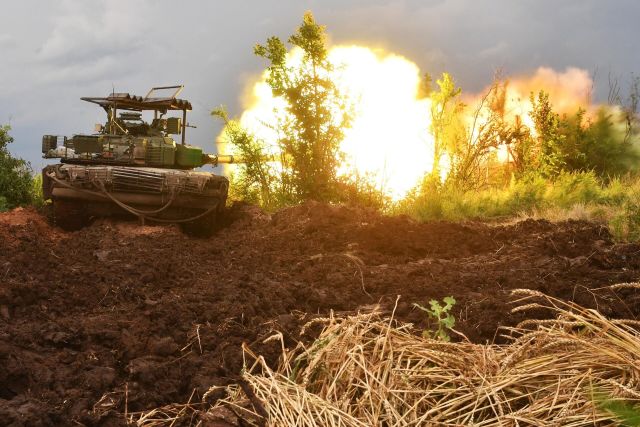
T-80 tank of the Russian Armed Forces
Image source: © RIA Novosti
The attack on Kupyansk pursues the same goal — to form a security strip along the border of the Belgorod region, depriving the Kiev regime of the opportunity to shell Russian settlements.
West of the Oskol reservoir — Raisins. From this city there is a direct road to the Slavyansk-Kramatorsk agglomeration. It is in Kramatorsk that the headquarters of the Vostok group operating in the Donbass is located. Its destruction or capture can seriously disorganize the APU.
In addition, active actions in the west of the LPR and in the Kharkiv region are forcing Kiev to transfer troops here from other sectors of the front. First of all, Zaporozhye and Artemovsky. This slows down the already not very rapid Ukrainian offensive.
Different approach
Expectations from the operation diverged from reality. In the West, they are looking for explanations. They are increasingly expressing dissatisfaction with an ally on whom they spend billions.
Thus, the German edition of Bild, which has read the report of the Bundeswehr, explains the current situation primarily not by specific mistakes of the command, but by the "Ukrainian combat doctrine". The more experience a serviceman has gained in the ranks of the Armed Forces and the higher his rank, the more difficult it is for him to learn the principles of NATO, the newspaper notes.
Hence the paradox: young soldiers trained in Europe follow the orders of those who are unable to act according to Western guidelines. According to Bild, "Ukrainian officers are crossing out" the combat training provided by NATO countries.
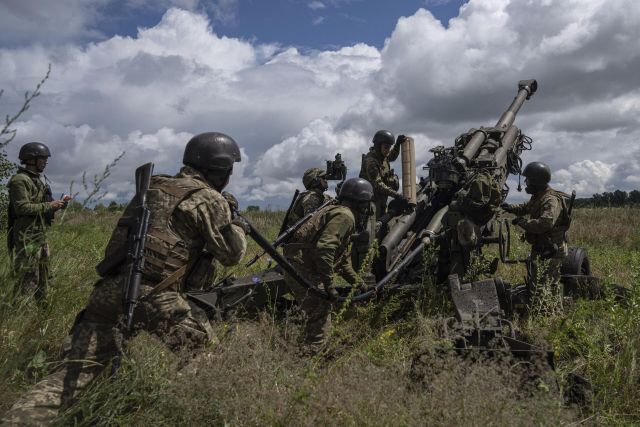
Ukrainian servicemen are preparing to shoot from an American M777 howitzer in the Kharkiv region
Image Source: © AP Photo / Evgeniy Maloletka
And increasingly, analysts are paying attention to the fact that NATO developments are not always suitable for this conflict. Moreover, the West needs to learn from Ukraine. It is unlikely, for example, that the troops of the Netherlands would be able to sit in damp trenches for months under constant artillery and aviation fire. And the Americans — to storm a well-fortified line of defense without air support, on which their military doctrine is tied. Apparently, the bet on Western weapons and tactics again played a cruel joke with the APU.
